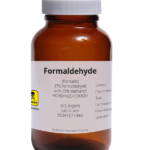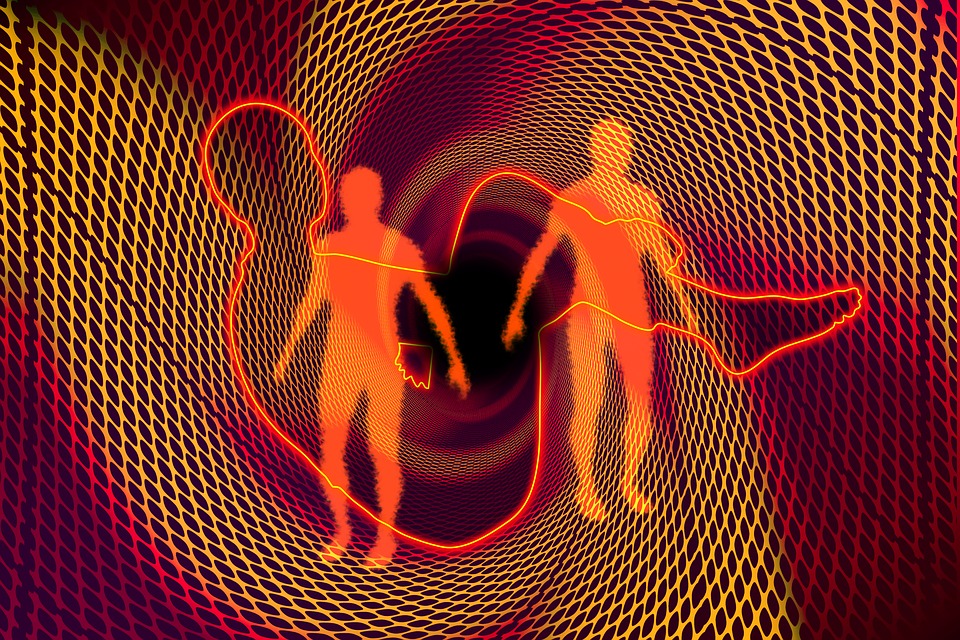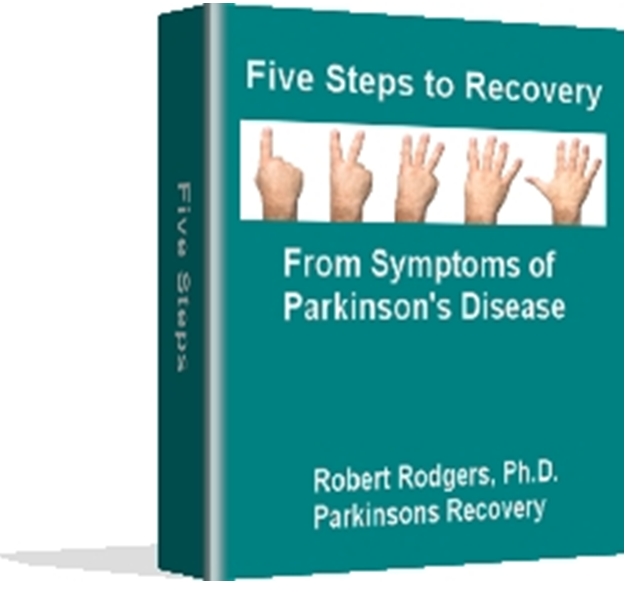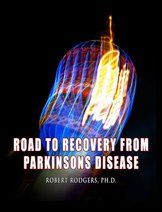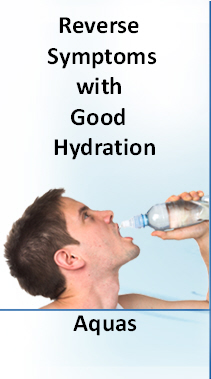What follows is an article written specifically on Parkinsons Disease An Integrative Individualized Approach written by Dr. Daniel Newman, M.D., N.D., M.S.O.M. and presented to a Parkinson’s support group in Portland, Oregon in October, 2009. For those who are attentive to initials that appear after people’s names, you may have already observed that Daniel Newman is a medical doctor, a naturopath doctor and an expert in Chinese medicine. What a powerful combination that is!
I aired an interview with Dr. Newman next month on the Parkinsons Recovery radio show.
visit Dr. Newman on Treating Parkinson’s to hear the recording of the program
Dr. Newman has a wealth of experience working with persons who have the symptoms of Parkinson’s and other neurological conditions. Dr. Newman reports evidence of recovery during the interview. He has a clinic in Vancouver, Washington where he sees Parkinson’s patients in addition to individuals with other chronic conditions.
This is an insightful and exciting article. I encourage everyone with the symptoms of Parkinson’s to take the time to read it through to the end.
Robert Rodgers, Ph.D.
Founder 2004
Parkinsons Recovery
Road to Recovery from Parkinsons Disease
It is estimated that Parkinsons Disease affects 1.5 million people in the United States, and about 1% of all Americans over age 60. While a small percentage of Parkinson’s Disease can be considered hereditary, in the vast majority of cases, the cause is deemed idiopathic or unknown. Nevertheless, there is increasing evidence that environmental toxins play a role in the destruction of the substantia nigra, the nest of dopamine producing neurons in the midbrain whose loss is the defining anatomical feature in Parkinson’s Disease.
Toxins implicated in the development of Parkinson’s Disease include: recreational drugs (such as cocaine and amphetamines); pharmaceutical drugs (e.g., phenothiazines and metoclopramide); pesticides (such as β-hexachlorocyclohexane or B-HCH and rotenone); solvents (e.g., toluene, hexane, and trichloroethylene or TCE); and metals (such as mercury, lead, copper, and manganese).
Parkinson’s Disease can present as a spectrum of symptoms, from mild to severe which is why use Parkinsons Disease An Integrative Individualized Approach. Aside from the characteristic tremor, patients with Parkinson’s Disease may manifest problems with: movement (slow arm swing, small handwriting, accelerating small steps when walking, rigidity, freezing, and decreased facial expression); balance (instability and the tendency to fall backwards); speech (slurred or muffled); diminished reflexes (including blinking and swallowing); sleep disturbance; mood disorders (anxiety or depression); difficulty thinking (cognitive dysfunction or dementia); constipation; and skin problems (either dry or oily).
Because of this broad spectrum of symptom type and severity, the treatment of Parkinson’s Disease patients must be individualized. The treatment program for a patient with simply a mild hand tremor should not be the same as for a patient with long-term, severe, incapacitating symptoms.
Treatment should accomplish three goals:
-
- 1. Symptom management – control of symptoms that have already manifested.
-
- 2. Neuro-protection – slow or prevent the further loss of dopaminergic neurons by providing the body with compounds that facilitate protection of nerve cells.
-
- 3. Detoxification – lower the burden of toxic chemicals in the body to prevent further destruction of dopaminergic neurons.
Parkinsons Disease An Integrative Individualized Approach to Treatment
My approach to the treatment of Parkinson’s Disease combines conventional treatment, naturopathic medicine, and Chinese medicine. I believe that each of these approaches has something unique to offer. Conventional treatment, in particular pharmaceuticals, can be helpful in managing the symptoms of advanced Parkinsons Disease. However, conventional medicine has little to offer in the realms of neuro-protection or detoxification.
Naturopathic medicine has a breadth of modalities that can be useful in addressing neuro-protection and detoxification, and can be helpful in symptom management, but may not be able to blunt the symptoms of late stage disease without pharmaceutical support.
Chinese medicine utilizes a different paradigm than Western medicine (either allopathic or naturopathic), looking at the body energetically. It may therefore be helpful in all 3 arenas of treatment, particularly when two of the primary treatment modalities, acupuncture and Chinese herbal formulas, are combined.
Symptom Management
Management of Parkinson’s Disease symptoms may involve the use of pharmaceuticals, particularly in the later stages of illness. Drugs used for Parkinson’s Disease include those that: boost the amount of dopamine in the brain by offering dopamine precursors (such as Sinemet, Apokyn, and Stalevo); act like dopamine in the brain (e.g., Mirapex, Requip, Permax, and Parlodel); block dopamines competing neurotransmitter, acetylcholine (e.g., Artane, Cogentin, Akineton, and Benadryl); and prevent dopamine from being broken down as quickly (Comtan, Tasmar, Eldepryl, and Azilect).
While these medications can be useful in some circumstances, they are not without side effects, sometimes serious ones. Also, they may become less effective over time requiring drug holidays. And, there is some suggestion that by overly exciting the remaining dopamine producing neurons in the brain, they may actually accelerate the progression of disease.
In some cases, deep brain stimulation (DBS) may be helpful in lessening the symptoms of Parkinson’s Disease where medications fail. However, this is an expensive neurosurgical procedure that carries its own attendant risks. It is not a cure, and though it may reduce motor symptoms by up to 60%, worsening of other symptoms, like cognitive dysfunction, is not uncommon.
Exercise, such as balance work, Tai Ji, and Qi Gong, has been shown in recent studies to be helpful in mitigating the balance issues in Parkinson’s Disease, and should be a part of any treatment program. Other types of exercise to promote general fitness, such as stretching, strengthening and aerobic exercise, can be useful in promoting general health and well being, thereby improving symptoms as well.
Dietary changes and appropriate personalized supplements may be helpful in addressing issues with skin condition, bowel function, sleep disturbance, and mood. A whole foods, organic, anti-inflammatory diet is a basic foundation. Diet should be further individualized based upon food sensitivities and digestive tract issues.
Chinese herbs and acupuncture may also be helpful with symptom management. Two systems of acupuncture, auriculotherapy (the use of needles retained in the ear) and scalp acupuncture (the use of needles retained in the scalp) are particularly useful in treating neurologic conditions like Parkinson’s Disease. Chinese herbs are best administered in synergistic combinations, specifically formulated for each individual based upon their Chinese energetic diagnosis.
Psycho-emotional health is very important in controlling symptoms. Individual counseling, support groups, meditation, and social networks can all be useful in supporting the spirit of the afflicted individual.
Neuro-protection
Protecting neurons against further damage is an essential part of preventing progression of disease in Parkinson’s Disease. While some nutritional supplements have been studied and show promise in this regard (Coenzyme Q10 and Vitamin E, for example), there are many others for whom more indirect evidence of antioxidant / neuro-protective effects exists. These include: R-lipoic acid, Carnitine, Acetyl-carnitine, Uridine, Alpha-glycerophosphorylcholine (alpha-GPC), Vitamin C, N-acetyl cysteine, Fish oils, Lithium orotate, Zinc, Vitamins B1, B5, B6, B12, Folic acid, and Phosphatidyl serine.
There are also a number of herbs that have shown promise in protecting neurons against damage, and / or improving dopaminergic activity in the brain. These include: Gingko biloba, Mucuna pruriens, Vinpocetine, Withania somniferens (Ashwaganda), Bacopa monniera; Rosemary; and several Chinese herbs (Dan Shen, Ye Jiao Teng, Bai Zi Ren, Huang Qi and Suan Zao Ren, to name a few).
Not all supplements or herbs should be used in all Parkinson’s Disease patients, nor should they be used in the same amounts. The extent of progression of disease, size and age of the individual, use of concurrent medications, and additional medical problems must all be considered in personalizing a safe and effective regimen.
Exercise, as mentioned above, particularly cardiovascular (aerobic) exercise, can increase cerebral blood flow by promoting healthy vasculature, thereby exerting a neuro-protective effect as well.
Detoxification
We live in a toxic world. Unprecedented pollution of our land, water, and air, due to decades of emissions, has reached the far corners of the globe. Radioactive plutonium can be found in remote areas of the arctic. Lead from gasoline banned in the United States 30 years ago can still be found in the atmosphere. Residues of pesticides banned over 40 years ago, such as DDT, can still be detected in our food supply.
Low levels of long-term toxin exposure tend to have an insidious effect on health over many years. Most toxicology studies look at the effects of acute poisoning, that is, a large dose given over a short period of time. Such studies form the primary basis for government recommendations of safe contact levels. However, we are all exposed to low levels of a multitude of toxins over a long period of time. Data on the effects of this real life exposure pattern is scant. However, experiments have demonstrated that even a single contact to legally acceptable levels of tainted air can have a lethal effect on laboratory animals.
Until the point when the sum of cellular damage from toxicity exceeds your bodys ability to compensate, you may feel perfectly well. The moment your body can no longer compensate for the amount of cellular damage you have accumulated, you get sick. It may seem like disease came on suddenly, when in fact you could not sense the accumulation of cellular toxicity until it reached a critical threshold.
The total amount of toxicity we have accumulated during our life-times is referred to as our toxic load. This is not a single number, like a blood pressure, for there is no way to calculate the total of all the poisons and damage from toxicity we have experienced in our lifetime. Rather, we can get a general idea based upon our past history of exposure to certain toxins. We can also perform tests to detect certain toxins that we may suspect, or that are highly toxic or ubiquitous, such as heavy metals. We can also test for toxicity indirectly, by looking at chemical end products of oxidation (rusting), or levels of antioxidant protection.
Some people clearly have high toxic loads based upon their history. I have had patients, including those with Parkinsons Disease, who acted as flaggers for crop dusting planes, dipped their hands in poisonous solvents to clean mechanical parts, chewed on lead rope, or as children, ran behind trucks spraying DDT or played with balls of mercury. Other patients I have attended to may not have had such clear contact, but upon testing had extremely high levels of environmental toxins from unknown exposures.
The first principle of detoxification is not to get toxic in the first place. This means avoiding toxins wherever possible. It is not feasible to avoid toxicity altogether, as there is nowhere on earth that is truly a pristine environment anymore. Nevertheless, there are many specific ways to limit toxic exposure.
The most critical step in toxicity avoidance, however, is to be conscious about it. Educate yourself about what is toxic, what alternatives there are or what protective steps you can take. And, keep toxicity exposure in mind when you decide where to live, what to eat or drink, or what products to use.
Apart from toxicity avoidance, which is preferred and of paramount importance, the second most important principle is to learn how to work with your body to improve your ability to detoxify. In order to do this, it is helpful to know something about the detoxification process.
Detoxification occurs both at the level of the cells and the body as a whole. At the level of the cells, detoxification involves several factors. First, wherever possible, the toxic substance must be removed from the cell and/or neutralized. Anti-oxidants help neutralize chemically reactive toxic substances called free-radicals. There are proteins called metallothioneins, which help neutralize and removed toxic heavy metals, such as mercury.
The cell membrane, which is the bag that surrounds our cells, is a complex border where decisions (in effect) are made about what gets in and out of the cell. It is mostly made of fat, and having the right balance of lipids in the cell membrane can effect the removal of toxins from the cell.
With regard to the body as a whole, enhanced circulation such as with exercise can improve blood flow to the cells, facilitating the removal of cellular toxins. Since much of the bodys toxic load is stored in the fat, breaking down fat with proper diet and exercise can also boost detoxification.
Once toxins have been mobilized from cells into the circulation, they must exit the body. They may exit via the urine (kidneys), stool (colon), sweat (skin), or breath (lungs). Elimination may be improved through these organs by various means. However, arguably the most important organ of detoxification is not an organ of direct elimination, but rather the liver.
The liver may be likened here to the sewage processing plant of the body. Chemical toxins (raw sewage) must be metabolized (processed) in order to be safely eliminated (dumped) by the body. Most petrochemical toxins, such as herbicides, pesticides, solvents, cleaning compounds, plastics, and cosmetics are primarily lipid soluble. Lipid solubility means that they dissolve more easily in fat than they do in water. To facilitate their elimination, the liver converts them into compounds that are more soluble in water. The liver also attempts to mitigate their toxicity by converting them into compounds that are less toxic than the original compound. By converting poisons in this way, they can more easily be eliminated, and, while in circulation, are likely to be less toxic.
Effective detoxification is an ongoing process of avoiding toxins wherever possible, and eliminating those that have accumulated in the body. Elimination involves the mobilization and removal of toxins that have built up in the body. This is most effectively accomplished by a well orchestrated program of facilitating toxin mobilization from the tissues, supporting their removal by the organs of detoxification, and optimizing the function of the body as a whole.
Detoxification is not necessarily an entirely benign process. If toxins are mobilized faster than they can be eliminated from the body, or if the body is not properly supported during detoxification, then people can feel more ill than they did before the process was started.
This may occur due to a phenomenon known as re-distribution in which a toxic molecule residing in a harmless location (let us say, the fat in your buttock) is mobilized into circulation, but before it can be eliminated from the body it ends up re-depositing in a not so benign location, like the brain.
Thus, while some aspects of detoxification are safe for individuals to self-administer, others are best guided by well-trained physicians. Even in the best of hands, depending upon ones initial state of health, constitution, and toxic load, it is not uncommon for people to feel initially worse before they get better.
A successful detoxification program is therefore a bit like conducting an orchestra or making a soup: you need the right components or ingredients, in the right amounts, introduced at the right time. Sometimes, small well-placed adjustments can mean the difference between a serenade and cacophony, or delectable versus inedible.
Successful detoxification requires a degree of vigilance for toxicity avoidance: eating clean food, drinking clean water, and generally avoiding chemicals in the environment. The remainder of the detoxification process, which should be supervised by a physician skilled in this process, would include diagnostic testing to assess hormone balance, nutritional deficiencies, signs of inflammation, and other disease states. Following this, appropriate supplements and procedures to facilitate toxin elimination would be prescribed.
Parkinsons Disease An Integrative Individualized Approach Conclusion
In summary, an integrative individualized treatment program for Parkinson’s Disease takes into consideration the stage of disease progression, and overall health and age of the patient. There are three main areas of focus: symptom management; neuro-protection; and detoxification. Conventional, naturopathic, and Chinese medicine modalities should be skillfully blended to maximize treatment efficacy.
Daniel I Newman, M.D., N.D., M.S.O.M.


